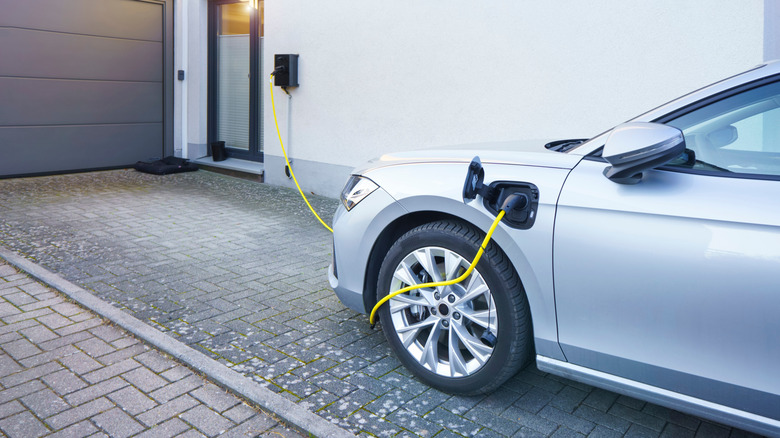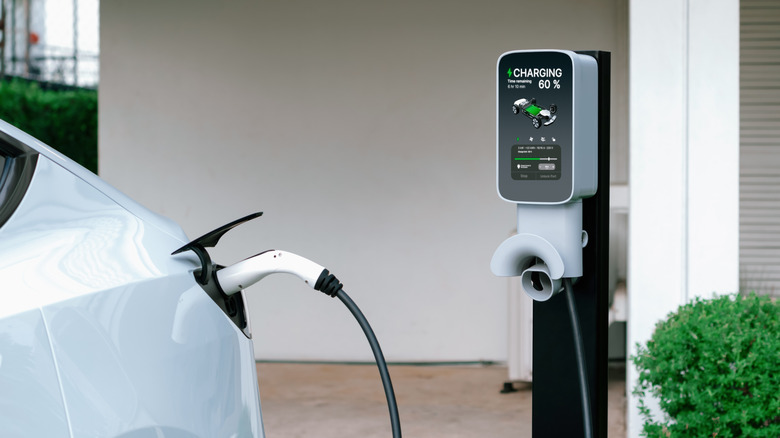Mistakes To Avoid When Installing An EV Charging Station In Your Garage
Electric vehicle sales have experienced years of robust growth, and this trend is expected to continue. According to the International Energy Agency, electric vehicle sales increased by more than 40% in 2023 compared to 2022 in the United States. And if you're an electric vehicle owner, a home EV charging station is essential. Now, although charging your vehicle at home offers several benefits, there are some mistakes you must avoid when you install a home EV charging station in your garage.
The mistakes include amateur installations, forgetting to access your home's electrical system, and buying the wrong type of charger. While the cost of installing an EV charger in your home can be a bit pricey, that amount will likely increase if you have any of these issues. Ensuring that you avoid them will allow you to enjoy the benefits of your home charging station.
For many electric vehicle owners, the convenience of having a charging station at home for their electric vehicle is a major advantage. The ability to charge the car while cooking dinner and relaxing in the evening saves time and money. In addition, it is better for your car's battery. The fast chargers found in public charging stations can degrade your battery and shorten its life when used too frequently. A home EV charger allows you to minimize the use of these public charging stations.
Common EV charging station installation mistakes
Choosing the wrong type of EV charging station for your vehicle and your charging needs is a common mistake. The most frequently used home EV chargers are Level 1 and Level 2 charging stations. The Level 1 charger usually comes with your vehicle and plugs into a typical 110V outlet. However, these chargers are extremely slow, taking as long as 24 hours to fully charge the vehicle. Level 2 chargers are faster but require a dedicated 220V circuit.
Neglecting to evaluate your home electrical system is another common mistake people make when installing an EV charger. Before buying an electric car, update your garage and home to ensure your electrical infrastructure has the capacity needed to handle the power demand of an EV charger. Older homes were designed when homes had less demand for electricity, so an upgrade may be needed.
A potentially dangerous mistake is not hiring a professional for your EV charging station installation. This is particularly true when you need an electrical service upgrade. A licensed electrician has the training and knowledge of electrical systems, EV charger installation, and local building and electrical codes to handle all aspects of the job, from evaluating the electrical infrastructure to installing the EV charger.
How to avoid mistakes with your home EV charger
The best way to avoid mistakes when you install an EV charging station in the garage is to work with an experienced, trained professional electrician. A licensed contractor certified in electric vehicle infrastructure installation will ensure that your charging station is properly installed and in compliance with all current electrical codes and regulations.
Another way you can avoid costly mistakes when installing an EV charging station is to think ahead and plan for the future. Buying a charger that works with a specific vehicle brand may not meet your long-term needs. Selecting a charger with universal compatibility ensures that it will work with any other type of electric vehicle you may buy in the future.
Taking the time to research your options and having your electrical system evaluated by a professional will also help you get informed on the total cost of EV charger installation. When you consider how much it costs to charge an electric car at a public charging station, you will find that installing an EV charger at home is worth the investment in the long run.


